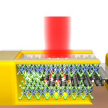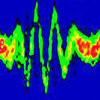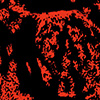Sep 02, 2022 (Nanowerk Spotlight) Blackbody response is highly desired in two-dimensional (2D) infrared photodetectors, which determines their practical applications. State-of-the-art available blackbody response mid-wavelength infrared (MWIR) photodetectors are fabricated using materials such as HgCdTe, InSb and InAsSb. However, these photodetectors need to operate at cryogenic temperatures to minimize thermally...
Team measures electronic noise more precisely than ever before
Sep 02, 2022 (Nanowerk News) A team of DESY scientists has succeeded for the first time in measuring so-called phase noise with 500 times greater precision than has been technically achievable in this frequency range before (IEEE Transactions on Instrumentation and Measurement, "Phase Noise Measurements for L-Band Applications at Attosecond...
Physicists develop a linear response theory for open systems having exceptional points
Sep 02, 2022 (Nanowerk News) Linear analysis plays a central role in science and engineering. Even when dealing with nonlinear systems, understanding the linear response is often crucial for gaining insight into the underlying complex dynamics. In recent years, there has been a great interest in studying open systems that...
New study confirms ‘rippled sheet’ protein structure predicted in 1953
Sep 02, 2022 (Nanowerk News) An unusual protein structure known as a “rippled beta sheet,” first predicted in 1953, has now been created in the laboratory and characterized in detail using x-ray crystallography. The new findings, published in Chemical Science ("The rippled b-sheet layer configuration – a novel supramolecular architecture...
entanglement of many atoms discovered for the first time
Sep 02, 2022 (Nanowerk News) Be it magnets or superconductors: materials are known for their various properties. However, these properties may change spontaneously under extreme conditions. Researchers at the Technische Universität Dresden (TUD) and the Technische Universität München (TUM) have discovered an entirely new type of such phase transitions. They...
Webb telescope takes its first-ever direct image of distant world
Sep 02, 2022 (Nanowerk News) For the first time, astronomers have used NASA’s James Webb Space Telescope to take a direct image of a planet outside our solar system. The exoplanet is a gas giant, meaning it has no rocky surface and could not be habitable. The image, as seen...
How artificial intelligence can explain its decisions
Sep 02, 2022 (Nanowerk News) Artificial intelligence (AI) can be trained to recognise whether a tissue image contains a tumour. However, exactly how it makes its decision has remained a mystery until now. A team from the Research Center for Protein Diagnostics (PRODI) at Ruhr-Universität Bochum is developing a new...
Fluorescence patterns aid medical diagnostics
Sep 01, 2022 (Nanowerk News) Researchers from Osaka University and collaborating partners have used single-molecule electron-transfer kinetics to identify point mutations in mRNA. This development might facilitate treatment of glioma and other diseases Standard medical imaging readily detects most solid brain cancers, one third of which are gliomas. Unfortunately, two...
Why do galaxies stop making stars? A huge collision in space provides new clues
Sep 01, 2022 (Nanowerk News) Six billion years ago, two galaxies were colliding, their combined forces hurling a stream of gas hundreds of thousands of light years away. Reported this week by a team including Pitt astronomers, that unusual feature provides a new possible explanation for why galaxies stop forming...
MOXIE experiment reliably produces oxygen on Mars
Sep 01, 2022 (Nanowerk News) On the red and dusty surface of Mars, nearly 100 million miles from Earth, an instrument the size of a lunchbox is proving it can reliably do the work of a small tree. The MIT-led Mars Oxygen In-Situ Resource Utilization Experiment, or MOXIE, has been...










